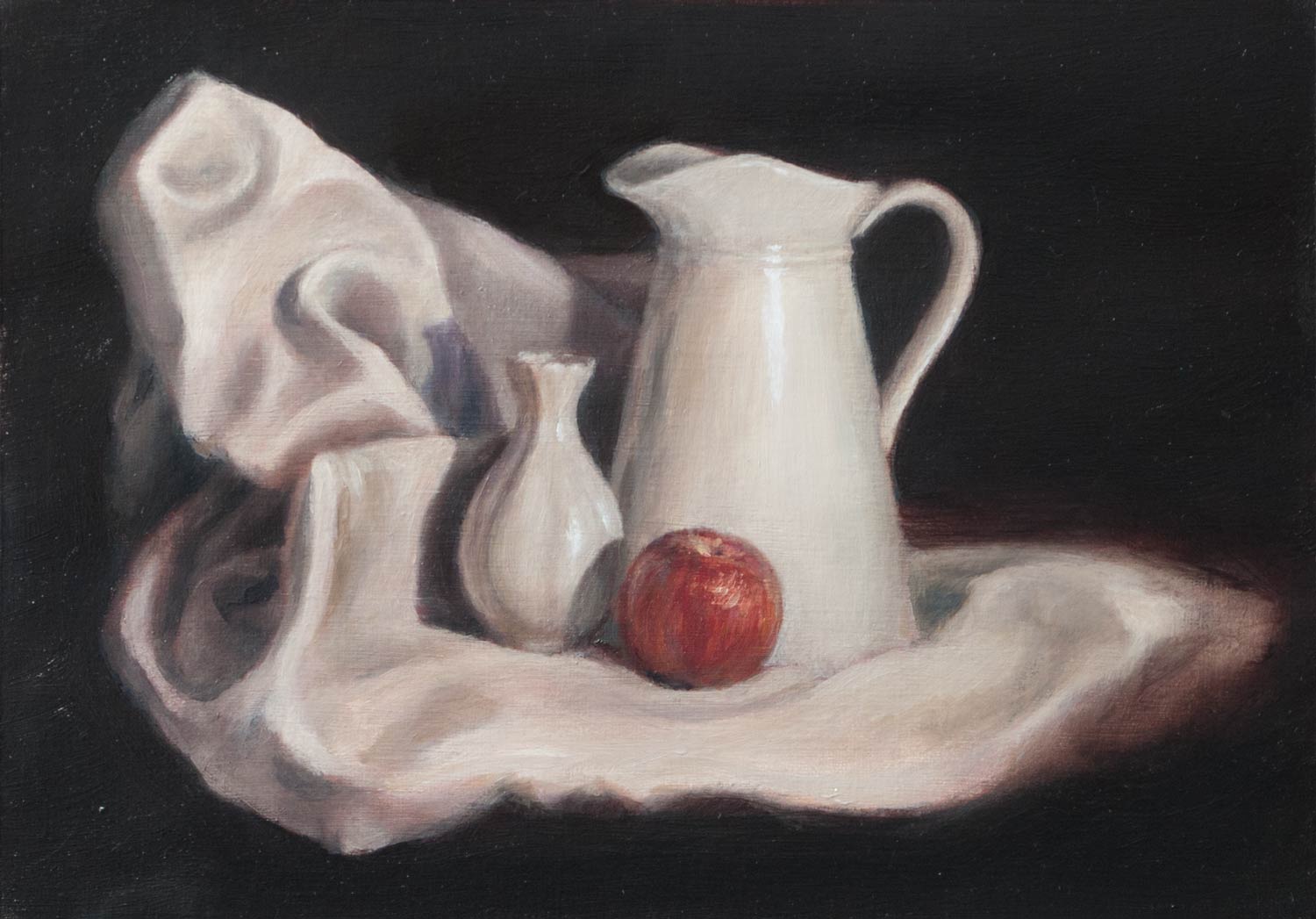Another painting in oils, going up in size to A4 acrylic paper covered with an extra layer of acrylic gesso. The still life was set up on a shelf in a cupboard, illuminated with a desk lamp.
A terra rosa underpainting was covered in a grey ‘dead’ layer (grisaille) and allowed to dry in preparation for glazing, which was the main point of this experiment — seeing layers of transparent glaze build up into forms, shadows and colour looked so satisfying when watching others do it, I wanted to try it myself.
But I had some problems. Thinned down with Galkyd Slow Dry medium and spread with a soft brush or rag, the diluted paint seemed to collect in the grain of the surface. So instead of a smooth layer of colour, it gave the underlying paint a dirty appearance. Maybe the previous layer wasn’t completely dry, or perhaps the surface needs to be smoother. Anyway, I ended up adding the final layers in opaque paint, which was quite satisfying as the work had already been done with the previous layers and I could follow the tones of the rough glaze below. I could probably have created much the same effect by painting the final colours directly over the underpainting — I’ll have to do some more glazing experiments.
I didn’t capture the subtle difference between the slightly grey-green jug and the warmer-toned porcelain of the vase (in the end I was just glad to get the shading roughly right). The red of the apple could have been more striking if everything else had a cooler tone. And the vase doesn’t pass the mirror test. But that’s the whole point of these studies: to test out materials and to get to know the pitfalls.
